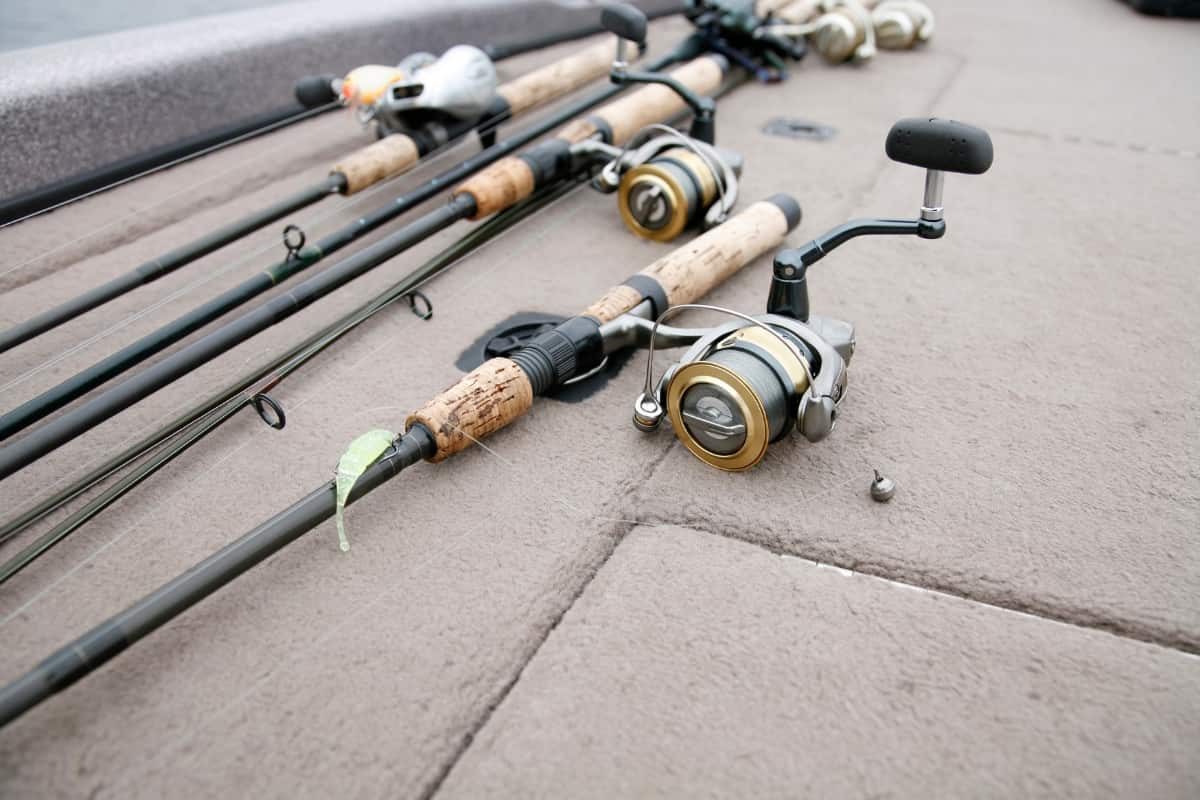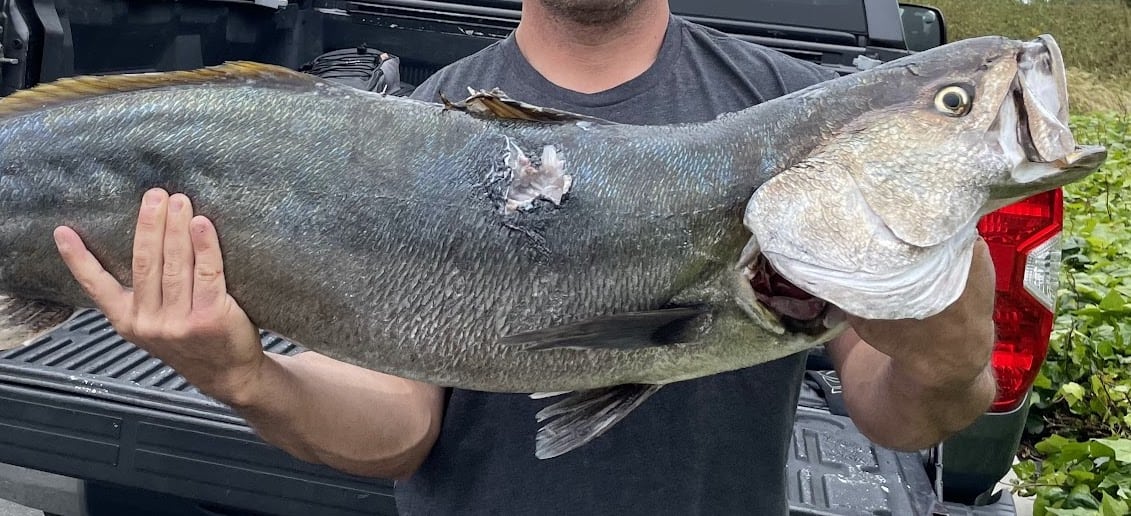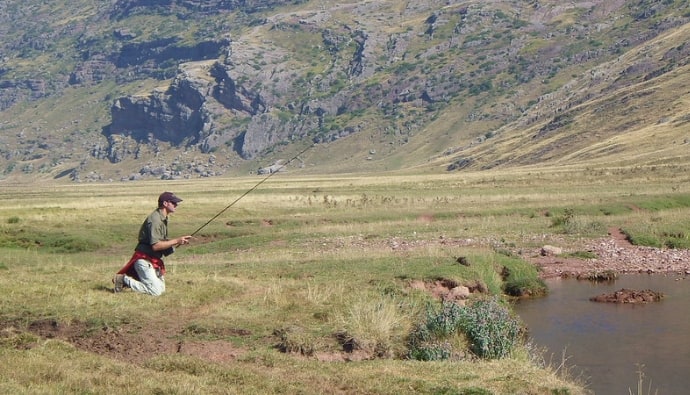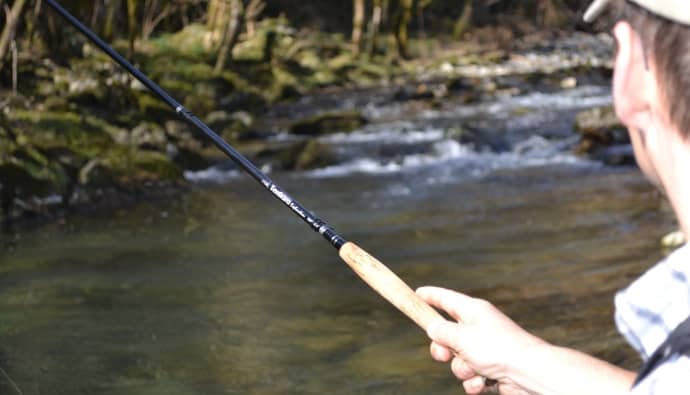To string your fishing pole, first, assemble the spinning reel and rod. After attaching the spinning reel to the rod, the next thing is to thread your fishing pole. You can lift the silver ring-like piece on your spinning reel and flip it to the other side. Next, use the arbor knot to loop the free end of your line and tie it into the standing line. Pull the edge of your thread through the loop closest to the hook eye and then pull it back into the other loop. Ensure you trim the tag end to tighten the knot. Lastly, close the bale arm by flipping it in the opposite direction, and your hook will be ready to attach the lure.
You should know how to string your fishing pole properly if you want to have a successful fishing trip. If you’re a newbie, you might need to exercise several times to master this vital art. Here, we’ve prepared a step-by-step guide to help you know how to string your fishing pole.
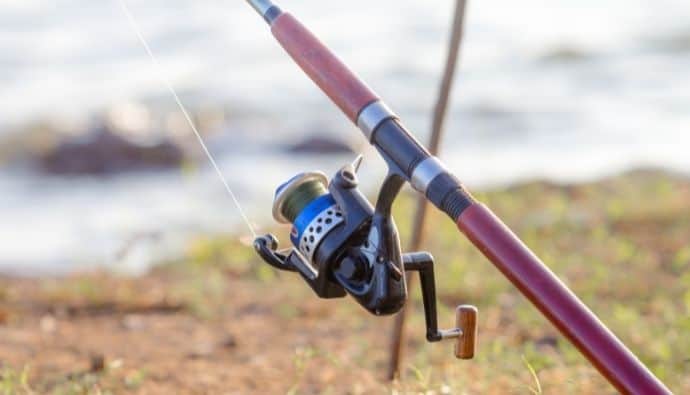
Equipment Needed to String a Fishing Pole
To string a fishing pole, here’s all the equipment you need.
Fishing Rod
This is a slim fishing pole where the line with a hook at the end is attached. It’s usually made from fiberglass or carbon fiber. The type of fishing rod to choose would depend on the kind of fish that you would catch.
Fishing Reel
There are four types of fishing reels: spinning reels, baitcasting reels, spinning reels, and fly reels. Fishing reels are the ones that you rotate to retrieve the fishing line. The speed of the release and retrieval of the fishing line would depend on the type of reel.
Fishing Line
There are three types of fishing lines – braided, monofilament, and fluorocarbon line. Anglers base their choice depending on its durability, weight, and overall line capacity. The more durable ones are fluorocarbon fishing lines, but you’ll need to frequently change them compared to braided lines.
Baits or Lures
These are tools used to attract your fish. If you just use a simple hook, it may be more challenging to catch a fish. You can use live fish or an artificial lure that mimics your targeted fish’s appearance and movement.
Step-By-Step Guide To String A Fishing Pole
Once you’ve completed the needed equipment, it’s now time to assemble them to complete your fishing gear. Here are the steps on how to string a fishing pole.
Part I: Assembling The Fishing Pole And Spinning Reel
Step 1: Before assembling your fishing pole and reel, it’s essential to be familiar with its parts first, so it’s easier to put them together, especially if you’re watching or reading guides on how to do it.
Step 2: Wipe all the pieces with a clean cloth before assembling them to get rid of debris or dirt that may scratch it. Afterward, lay the fishing rod together.
Step 3: Most fishing rods are detached through the joints known as ferrules. Hold one ferrule securely at a 45-degree angle and anchor another ferrule around it. Push and twist the two ferrules together until the metal loops are aligned.
Step 4: Attach the spinning reel to the fishing pole. Look for the reel seat located at the bottom of your fishing pole, where you can insert the reel. Make sure not to over-tighten the reel to avoid cracking or destroying the fishing rod.
Part II: Threading Your Fishing Pole
Step 1: Lift the silver ring-like piece on the spinning reel, the bale arm, and flip it on the other side. You can only load the fishing line if you open the bale arm. Do this by simply flipping up the wire arm of the reel.
Step 2: Using an arbor knot, loop the free end of the new line and tie a loose knot into the standing line. Make sure that knots are snugly tied by tying another loose knot at the tag end up to seven times.
Step 3: Pull the edge of the thread into the loop closest to the hook eye and pull it back into the larger loop. The knot will tighten if you’ll pull the tag end together. Trim the tag end.
Step 4: Close the bale arm by simply flipping it up in the opposite direction. You would know that it’s really closed if there are no more fishing lines that would come out if you pull the line.
Part III: Attach The Hook And Lure
Step 1: The first step is to choose a lure. There are different kinds of lures that you can choose from. Base the color of the lure that you’ll be using depending on the weather. If it’s a sunny day, pick a silver lure.
The silver lure easily attracts attention once the light rays reflect on it. In gloomy weather, choose gold because its reflective property gives off light to get attention. Use a spinner if you want an all-purpose lure.
Step 2: Thread the line through the eye of the hook. Secure it by wrapping the tag end into the standing line at least five times.
Step 3: Tuck the tag end back through. Do this by taking the tag end and drawing it back through the lure. Loop it through the big loop where the line is. Tuck it one more time within the loop so it would come underneath the line.
Step 4: Wind the overhand knot by pulling the mainline and tag end together to create a tight knot at the lure.
Tip! If you’re still unsure of how to string a fishing pole, you can go to a reel filling station. Almost all fishing shops have this.
Final Thoughts
A way to have a successful catch depends on how well you have assembled your equipment. You may not be able to master how to string a fishing pole on your first try, but as long as you’ll have the patience to learn it, you will surely reap the benefits of it when you go on fishing trips.



 Facebook
Facebook YouTube
YouTube